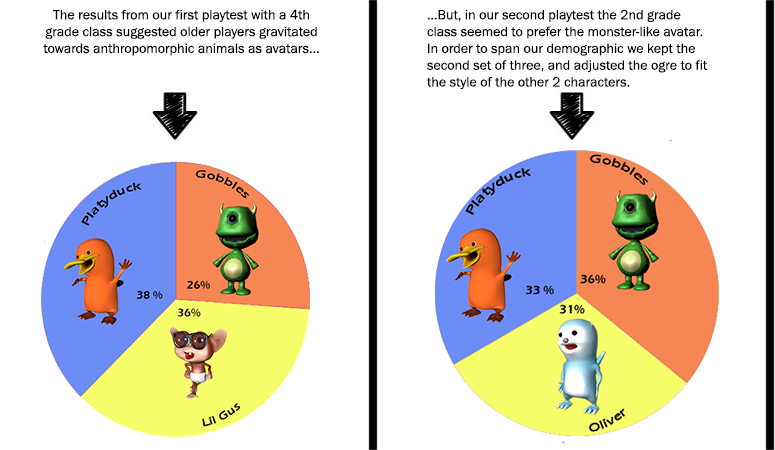On Friday March 7th, We held our second playtest at Bower Hill Elementary. We had a class of 20 second graders (12 girls and 8 boys) for playtesters, and again our players were participants in the Questyinz pilot.
For this playtest, our players had a prototype which built off previous functionality so that users had the interactive bookshelf, but could now visit each other’s houses and suggest books to their friends by placing them on their friend’s “Recommended” shelf.
Our purpose for this playtest:
-
See how players acted when visiting each other’s spaces.
-
What were their expectations? What did they want to do in each other’s houses?
-
-
See how players felt about recommending books
The game is still very much a work in progress, however it was nice to see the players excitement when visiting each others houses and even more so when they realized they could put things on each other’s shelf.
Some Takeaways:
-
The main environment in which our game will be played is an interesting one. As the game will foremost be played by a young audience in their school library or in a classroom setting, the players will be in the same room and often side by side.
-
This means when players do some action in the game, they frequently expect to see feedback on their friends screen. The player’s were just beginning to try out visiting other player’s houses, and we had not implemented an update for the bookshelf during play. This meant that when a player recommended a book ( put it on a player’s shelf) they didn’t see it right away. This was disappointing for the players.
-
There is both a “show and tell” atmosphere and a copycat feeling ( I want to do what my friend is doing)
-
Both of these aspects of the play environment are good for us. It means that if we have playful animations or interactions the users like, then they will show their friend to the right and they will feed off each other’s excitement. So, if we can tie this excitement to books and reading, then it achieve our goal of centralizing social aspects of the game around reading.
-
-
-
There is a big difference in the way the different ends of our demographic play.
-
Younger player’s are more easily amused if you can grab their attention, but you have much smaller window to do so.
-
All the player’s in our demographic require structure in the experience, but especially the younger kids are more likely to feel lost, whereas the fourth graders are more willing to explore the system on their own.
-
-
Again, any means of interaction between players creates excitement
-
Some players have expectations that they can read the books WITHIN the game.
Our Next Steps:
-
Design some quests to incentivize interactions with the bookshelf. This should give the player’s some structure in their experience, and help address the “What should I do?” feeling.
-
Player’s repeatedly mention wanting some objects or decorations for their house. We are working on creating these assets, and also we will design our player objective’s in a way that ties into our decorations as well.
- Continue to add art assets for the environment and animations for the characters (to create the feeling of responsiveness our playe

